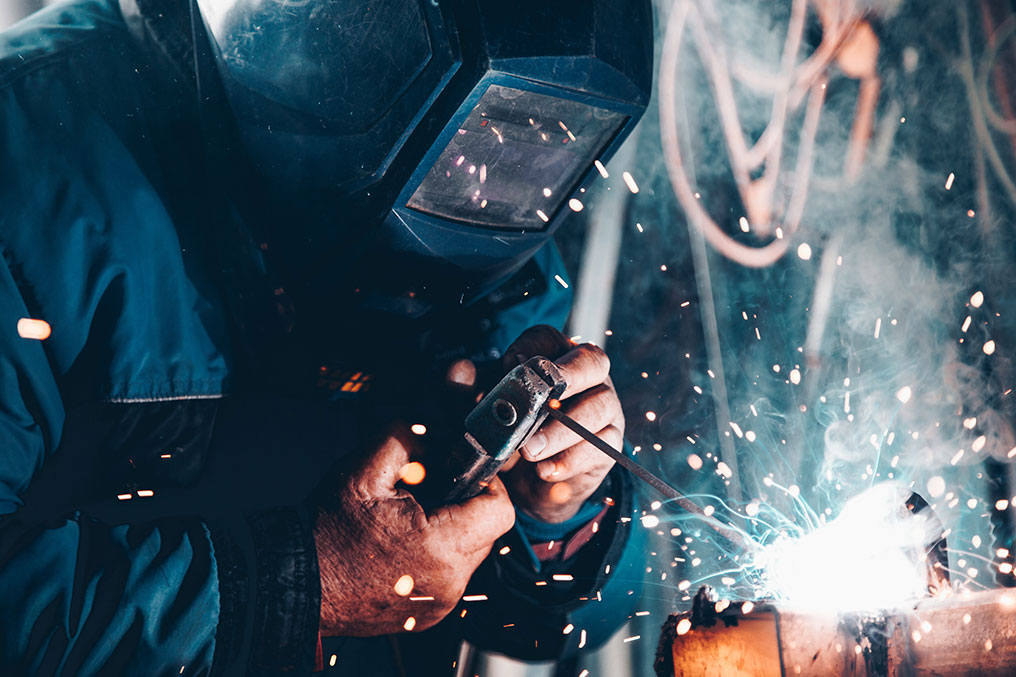Stories you may like
Cabinetmaker
A cabinetmaker specializes in designing, building, and installing custom-made cabinets and furniture. They are highly trained in working with various types of wood, tools, and machinery to create functional and aesthetically pleasing pieces. Cabinetmakers often work in both residential and commercial settings, collaborating with homeowners, interior designers, and architects to bring their visions to life.
The work of a cabinetmaker involves several stages, starting with understanding the client's requirements and specifications. They then proceed to create detailed plans and blueprints, taking into account the available space, desired style, and functionality. Cabinetmakers meticulously select and prepare the appropriate wood, ensuring its quality and durability. They use a combination of traditional woodworking techniques and modern tools to cut, shape, join, and finish the wood, creating customized cabinets, shelves, tables, and other furniture pieces. Attention to detail is crucial in cabinetmaking, as precision measurements, precise cuts, and seamless joinery are essential for achieving a high-quality final product. A cabinetmaker's expertise extends beyond construction, as they also install and fit the finished pieces, ensuring they integrate seamlessly into the intended space.
Cabinetmakers craft functional and aesthetically pleasing furniture pieces for homes, offices, and other spaces. Their expertise in woodworking and design ensures the creation of high-quality, custom-made cabinets that maximize storage and enhance the overall look of a room. Cabinetmakers contribute to the durability and longevity of furniture, providing customers with long-lasting investments.
Duties and Responsibilities
As a cabinetmaker, your duties and responsibilities involve a range of tasks related to designing, constructing, and installing custom cabinets and furniture. Here is a detailed description:
- Client Consultation and Design: You will work closely with clients to understand their specific needs, style preferences, and functional requirements for the cabinets or furniture. This involves conducting thorough consultations to gather information about the desired size, shape, storage features, and overall aesthetic of the project. Utilizing design software, sketches, or hand-drawn plans, you will create detailed blueprints and visual representations of the proposed design. Incorporating the client's input and making adjustments as necessary will be important in finalizing the design.
- Material Selection and Procurement: You will be responsible for selecting and sourcing the appropriate materials needed for the project. This includes choosing high-quality wood, hardware, and other materials based on factors such as durability, aesthetics, and budget. You will also consider any special requests or preferences from the client regarding the type of wood, finish, or hardware to be used.
- Construction and Assembly: Using your woodworking skills and expertise, you will transform the chosen materials into functional and visually appealing cabinets or furniture pieces. This involves cutting, shaping, and joining the components together using various techniques such as dovetail joints, mortise and tenon joints, or dowel joints. Precision and attention to detail are crucial during the construction process to ensure proper fit, stability, and longevity of the final product.
- Finishing and Installation: After the construction phase, you will apply finishes to the cabinets or furniture pieces to enhance their appearance and protect them from wear and tear. This may involve staining, painting, or applying varnish or lacquer. You will carefully inspect the finished product for any imperfections or defects and make necessary adjustments or repairs. Finally, you will install the cabinets or furniture pieces in the designated space, ensuring proper alignment, stability, and functionality.
- Maintenance and Repair: As a cabinetmaker, you may also be responsible for providing maintenance and repair services for existing cabinets or furniture pieces. This can involve fixing loose joints, replacing damaged components, or refinishing surfaces to restore their original condition.
Workplace of a Cabinetmaker
The workplace of a cabinetmaker can vary depending on various factors such as the type of cabinetmaking they specialize in, their employment setting, and the nature of the projects they undertake. In general, cabinetmakers can work in a variety of environments, including workshops, manufacturing facilities, or on-site at clients' locations.
A cabinetmaker's workshop is often the central hub of their operations. It is equipped with a range of tools and machinery essential for woodworking, such as table saws, routers, drills, sanders, and joinery equipment. The workshop provides a controlled and organized space where cabinetmakers can fabricate and assemble cabinets and furniture pieces with precision and efficiency. Workshops are typically set up with workbenches, storage for materials and tools, and a dedicated area for finishing and applying stains, paints, or varnishes.
In some cases, cabinetmakers may work in manufacturing facilities, particularly if they are involved in mass production or commercial cabinetry. These facilities are usually larger and may have specialized machinery and assembly lines to handle high volumes of production. They may also have separate areas for quality control, packaging, and shipping.
For cabinetmakers who offer on-site installation services, their workplace extends beyond the workshop. They visit clients' homes, businesses, or construction sites to measure spaces, install cabinets, and ensure proper fitting and functionality. This aspect of their work allows them to collaborate closely with clients and adapt their skills to specific environments and design requirements.
Regardless of the workplace setting, safety protocols and practices are of utmost importance for cabinetmakers. They must adhere to safety guidelines and regulations to minimize the risk of accidents and ensure a healthy work environment. This includes using personal protective equipment, maintaining machinery properly, and following best practices for handling tools, materials, and hazardous substances.
Most In-demand Hard Skills
The following list describes the most required technical skills of a Cabinet Maker:
- Proficiency in reading and interpreting blueprints and technical drawings.
- Knowledge of different types of wood and their properties.
- Expertise in operating woodworking tools such as saws, routers, and drills.
- Ability to operate and maintain woodworking machinery.
- Skill in measuring, cutting, and shaping wood accurately.
- Understanding of joinery techniques, such as mortise and tenon, dovetail, and dado.
- Familiarity with cabinet assembly methods and hardware installation.
- Knowledge of various finishing techniques, including staining and lacquering.
- Ability to use computer-aided design (CAD) software for design and layout.
- Understanding of safety protocols and practices in woodworking.
- Proficiency in using hand tools, such as chisels, planes, and sanders.
- Knowledge of different types of joinery and their applications.
- Competence in using precision measuring tools, such as calipers and tape measures.
- Skill in operating and maintaining pneumatic tools.
- Understanding of wood carving and decorative techniques.
- Knowledge of different types of hinges, slides, and other cabinet hardware.
- Ability to identify and select appropriate adhesives and fasteners.
- Competence in working with laminates, veneers, and other decorative surfaces.
- Understanding of woodworking math and calculations.
- Knowledge of industry standards and best practices in cabinet making.
Most In-demand Soft Skills
The following list describes the most required soft skills of a Cabinet Maker:
- Attention to detail: Cabinet making requires meticulous precision and an eye for detail to ensure the final product meets high-quality standards.
- Problem-solving: Cabinet Makers often encounter challenges during projects, such as fitting cabinets into tight spaces or resolving design conflicts. The ability to find innovative solutions is crucial.
- Communication: Effective communication is essential when working with clients, designers, and other team members. Cabinet Makers must be able to understand project requirements, provide updates, and collaborate effectively.
- Time management: Meeting project deadlines is crucial in the woodworking industry. Cabinet Makers need strong time management skills to prioritize tasks and allocate sufficient time for each stage of the project.
- Adaptability: Flexibility is vital in cabinet making, as projects can vary greatly in terms of design, materials, and specifications. Cabinet Makers should be adaptable and open to adjusting their approach as needed.
- Teamwork: Cabinet Makers often work alongside other tradespeople, such as carpenters, electricians, and plumbers, on construction or renovation projects. Collaboration and the ability to work well in a team environment are important.
- Creativity: While Cabinet Makers may follow specific design plans, creativity comes into play when customizing projects or solving design challenges. The ability to think outside the box and bring unique ideas to the table is valued.
- Physical stamina: Cabinet making involves physical labor, such as lifting heavy materials, standing for extended periods, and operating machinery. Good physical stamina and endurance are necessary to perform the job effectively.
- Organizational skills: Keeping a well-organized workspace, managing project materials and supplies, and maintaining accurate records are all part of a Cabinet Maker's responsibilities. Strong organizational skills contribute to efficiency and productivity.
- Professionalism: Cabinet Makers represent their craft and their business when interacting with clients. Professionalism, integrity, and a customer-centric approach contribute to positive client relationships and repeat business.
Average salary of Cabinetmaker
Region Average Annual Salary Monthly Salary
United States $35,000 – $60,000 $2,900 – $5,000
Canada CAD 40,000 – CAD 65,000 CAD 3,300 – CAD 5,400
United Kingdom £25,000 – £40,000 £2,000 – £3,300
Australia AUD 50,000 – AUD 80,000 AUD 4,100 – AUD 6,600
India ₹2,00,000 – ₹5,00,000 ₹16,000 – ₹42,000
UAE AED 30,000 – AED 60,000 AED 2,500 – AED 5,000 |
Factors Influencing Salary
Experience level– Skilled cabinetmakers or master craftsmen earn higher pay.
Type of employer – Working for luxury furniture brands, yacht builders, or custom design studios pays more.
Location – Urban areas or countries with higher cost of living offer higher wages.
Specialization – Expertise in CNC woodworking, fine joinery, or restoration increases earning potential.
Freelancing or owning a workshop – Independent cabinet makers can earn significantly more depending on projects.




User's Comments
No comments there.